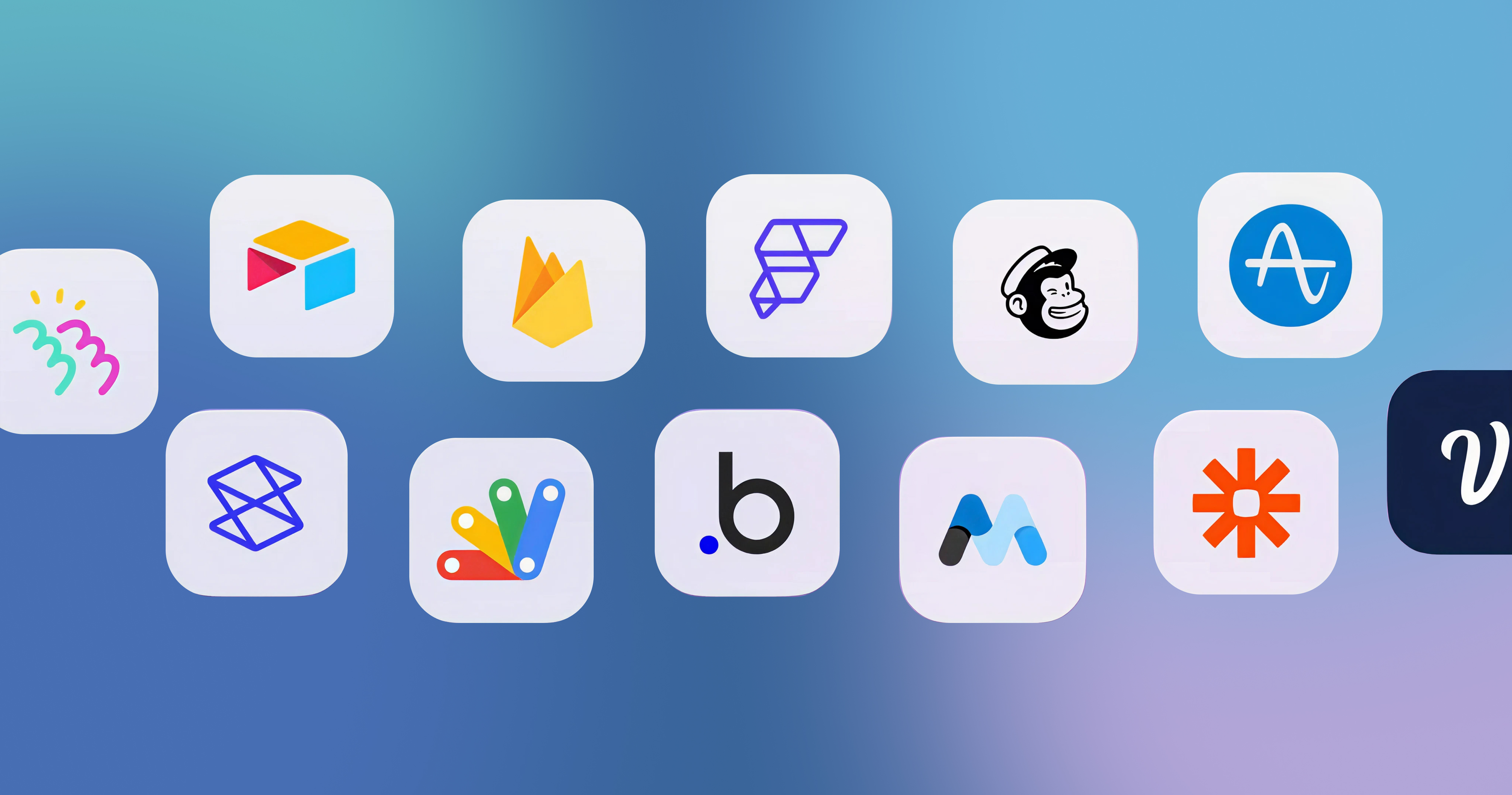-p-2000.png)


Competitive Metrics in Google Ads: Everything You Need to Know

When you advertise online, how do you ensure that engagement happens and that your ad stands out?
If you have been running ad campaigns, you might have been faced with challenges several times while trying to attract the audience's attention and engage them. Besides attracting audience attention, your ad should perform exceptionally well to stand out from the competition.
To work on enhancing your ad campaign, you need to have a clear understanding of its performance - in regards to what can be done better to beat your competitors. By keeping an eye on what your competitors are doing, you can adjust your own strategies to stay ahead of the curve.
In this article, we’ll take a look at what competitive metrics you should be tracking in Google Ads.
What Are Competitive Metrics in Google Ads?
Look for the columns in Google Ads. Yes, these are competitive metrics that will help you identify your position when compared with your competitors.
You will get data related to the frequency with which your ads are displayed (when compared with ads that are displayed for similar keywords or audiences). These metrics can be classified according to ad groups, campaigns, or keywords.
When you have these details, you can focus on what can be done to increase the number of clicks, thereby enhancing your brand’s performance and contributing to remarketing efforts, if needed.
Why Are Competitive Metrics Important in Google Ads?
Once you have insights into competitive metrics, you can identify the strengths and weaknesses of your campaign. Based on your evaluation, you can identify where your campaign can flourish in comparison to your competitors. You can further analyze if your campaign can achieve the expected goals.
Poor ad rank or a limited budget may cause your impressions to drop; these metrics will help monitor such changes.
Different Competitive Metrics in Google Ads
1. Search Impression Share
With this metric, you can analyze your campaign’s, ad group's, or keyword’s impression share received on your search network. You can calculate this by dividing the impressions your campaign got in the search network by the estimated number of impressions you were eligible to receive from a specific campaign.
Using search impression share, you can identify the users who engaged with your ad. In addition, the it also helps you evaluate your campaign’s performance across the ad auction. (Factors such as image quality, audience demographics, and so on influence the impression share.) All these numbers will help you to fine tune your campaign such that it will target only the intended audience. You can save a lot of money by focusing your ad budget on clicks that are relevant.
This competitive metric makes it easy to reach out to a wide range of audiences who are searching for relevant products.
Create a post-click landing page that is interactive and will generate user interest, pushing them through the sales funnel and, ultimately, taking the desired action.
2. Search Exact Match IS
You can calculate this metric by dividing the impressions generated by your campaign on the search network by the estimated impressions you were expecting to receive for search terms that exactly matched your keyword. This metric comes in handy in a situation where you get a low impression share on broad and phrase match keywords while the exact match impression share is on the higher side.
Here, you may take the liberty to add the terms as an exact match to enhance your impression share.
Use this metric to engage those users who are searching for exactly the same keywords or close variants. Your ad will be displayed whenever a user searches for the exact same keyword you’re bidding in the campaign. All you have to do is to ensure that your ad closely matches your audience’s search query. If you do this, your search term will appear in Google Ads.
Keep in mind the following points when working on this competitive metric:
1. Adjust your bid wisely.
2. Include keywords within the ad group.
3. Use negative keywords to avoid unwanted clicks.
3. Search Lost IS (Budget)
This metric represents the percentage of time your ads were not displayed on search due to low budget. For instance, if you see 30% in this metric, it means your ad was not shown to 30% of the people who searched for the keywords you were bidding on.
If this percentage is high, you should consider increasing your ad budget to ensure that your ad reaches your target audience. This metric cannot be accessed at the keyword or ad group level because budgets are allotted at campaign level. So, you have to view this at the campaign level to understand where you need to make bid adjustments to reach your relevant audience groups.
4. Search Lost IS (Rank)
This metric represents the percentage of time your ads were not displayed on search due to poor ad rank. The higher your ad rank, the more likely your ad is to be seen by potential customers. Ad rank is determined by a number of factors, including the quality and relevance of your ad, bid amount, competition etc.
Here are a few tips to improve your ad rank and get in front of more potential customers:
1. Make sure your ads are relevant and targeted to your audience. The more relevant your ads are, the higher your ad rank will be.
2. Increase your bid to stay competitive in the bid auction and to ensure your bids are above the Ad Rank thresholds.
3. Improve ad relevance by including relevant keywords in your ad copy and landing page.
4. Include ad extensions like sitelinks, callout, call extensions in your ads to help improve your ad quality.
Recommended Read:
How to Outperform Your Competitors with PPC Competitive Intelligence
Conclusion
With the above competitive metrics, you will be able to identify keywords and ad groups that will help enhance your campaign. All these factors together will help you optimize your ad campaign in such a way that it will contribute to attracting and engaging more users and increasing sales.
About Seattle New Media
We're a top rated digital marketing agency, committed to helping clients increase their sales and conversion rates with our PPC management services. Get more clicks and sales from your ad campaigns. Contact us today to improve your PPC performance!

FAQ
Editorial Team
Publisher
When you advertise online, how do you ensure that engagement happens and that your ad stands out?
If you have been running ad campaigns, you might have been faced with challenges several times while trying to attract the audience's attention and engage them. Besides attracting audience attention, your ad should perform exceptionally well to stand out from the competition.
To work on enhancing your ad campaign, you need to have a clear understanding of its performance - in regards to what can be done better to beat your competitors. By keeping an eye on what your competitors are doing, you can adjust your own strategies to stay ahead of the curve.
In this article, we’ll take a look at what competitive metrics you should be tracking in Google Ads.
What Are Competitive Metrics in Google Ads?
Look for the columns in Google Ads. Yes, these are competitive metrics that will help you identify your position when compared with your competitors.
You will get data related to the frequency with which your ads are displayed (when compared with ads that are displayed for similar keywords or audiences). These metrics can be classified according to ad groups, campaigns, or keywords.
When you have these details, you can focus on what can be done to increase the number of clicks, thereby enhancing your brand’s performance and contributing to remarketing efforts, if needed.
Why Are Competitive Metrics Important in Google Ads?
Once you have insights into competitive metrics, you can identify the strengths and weaknesses of your campaign. Based on your evaluation, you can identify where your campaign can flourish in comparison to your competitors. You can further analyze if your campaign can achieve the expected goals.
Poor ad rank or a limited budget may cause your impressions to drop; these metrics will help monitor such changes.
Different Competitive Metrics in Google Ads
1. Search Impression Share
With this metric, you can analyze your campaign’s, ad group's, or keyword’s impression share received on your search network. You can calculate this by dividing the impressions your campaign got in the search network by the estimated number of impressions you were eligible to receive from a specific campaign.
Using search impression share, you can identify the users who engaged with your ad. In addition, the it also helps you evaluate your campaign’s performance across the ad auction. (Factors such as image quality, audience demographics, and so on influence the impression share.) All these numbers will help you to fine tune your campaign such that it will target only the intended audience. You can save a lot of money by focusing your ad budget on clicks that are relevant.
This competitive metric makes it easy to reach out to a wide range of audiences who are searching for relevant products.
Create a post-click landing page that is interactive and will generate user interest, pushing them through the sales funnel and, ultimately, taking the desired action.
2. Search Exact Match IS
You can calculate this metric by dividing the impressions generated by your campaign on the search network by the estimated impressions you were expecting to receive for search terms that exactly matched your keyword. This metric comes in handy in a situation where you get a low impression share on broad and phrase match keywords while the exact match impression share is on the higher side.
Here, you may take the liberty to add the terms as an exact match to enhance your impression share.
Use this metric to engage those users who are searching for exactly the same keywords or close variants. Your ad will be displayed whenever a user searches for the exact same keyword you’re bidding in the campaign. All you have to do is to ensure that your ad closely matches your audience’s search query. If you do this, your search term will appear in Google Ads.
Keep in mind the following points when working on this competitive metric:
1. Adjust your bid wisely.
2. Include keywords within the ad group.
3. Use negative keywords to avoid unwanted clicks.
3. Search Lost IS (Budget)
This metric represents the percentage of time your ads were not displayed on search due to low budget. For instance, if you see 30% in this metric, it means your ad was not shown to 30% of the people who searched for the keywords you were bidding on.
If this percentage is high, you should consider increasing your ad budget to ensure that your ad reaches your target audience. This metric cannot be accessed at the keyword or ad group level because budgets are allotted at campaign level. So, you have to view this at the campaign level to understand where you need to make bid adjustments to reach your relevant audience groups.
4. Search Lost IS (Rank)
This metric represents the percentage of time your ads were not displayed on search due to poor ad rank. The higher your ad rank, the more likely your ad is to be seen by potential customers. Ad rank is determined by a number of factors, including the quality and relevance of your ad, bid amount, competition etc.
Here are a few tips to improve your ad rank and get in front of more potential customers:
1. Make sure your ads are relevant and targeted to your audience. The more relevant your ads are, the higher your ad rank will be.
2. Increase your bid to stay competitive in the bid auction and to ensure your bids are above the Ad Rank thresholds.
3. Improve ad relevance by including relevant keywords in your ad copy and landing page.
4. Include ad extensions like sitelinks, callout, call extensions in your ads to help improve your ad quality.
Recommended Read:
How to Outperform Your Competitors with PPC Competitive Intelligence
Conclusion
With the above competitive metrics, you will be able to identify keywords and ad groups that will help enhance your campaign. All these factors together will help you optimize your ad campaign in such a way that it will contribute to attracting and engaging more users and increasing sales.
About Seattle New Media
We're a top rated digital marketing agency, committed to helping clients increase their sales and conversion rates with our PPC management services. Get more clicks and sales from your ad campaigns. Contact us today to improve your PPC performance!
FAQ
Editorial Team
Publisher




Hi, I'm Mike!
If you are enjoying the article, feel free to subscribe to our monthly newsletter.
If you have any project requirements, please contact us.



.png)










